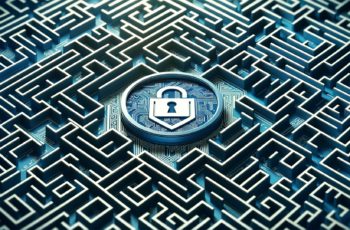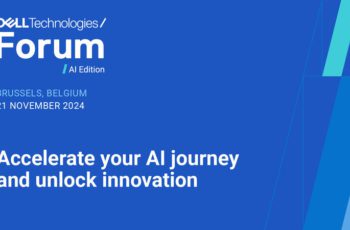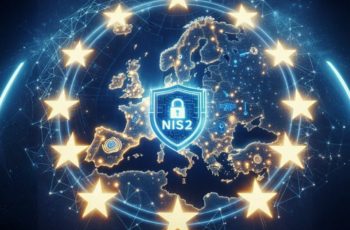[Advertorial] Has cybersecurity ever been more important than it is today? I doubt it. Companies and government organizations are increasingly experiencing targeted attacks. And its impact is getting bigger and bigger.
Fortunately, the security strategies we can implement and the technologies we use are evolving as quickly as the threats. Artificial intelligence (AI), zero trust frameworks and advanced endpoint management are playing an increasingly important role in strengthening defenses against cyberattacks. To ensure a secure and resilient digital infrastructure, it is therefore essential to understand and implement these developments.
At a recent Tanium event in Brussels, security specialists discussed four critical aspects of cybersecurity: AI, Zero Trust, remediation and forensics, and reporting and visibility. These issues are at the heart of modern security strategies. They provide valuable insights into how companies anticipate cyber threats and how best to respond if an attack actually occurs. Tanium’s Autonomous Endpoint Management (AEM) and Converged Endpoint Management (XEM) solutions provide important support in this regard.
AI is the new frontier in cyber defense
AI has the potential to dramatically improve cybersecurity. It offers powerful tools to detect and prevent attacks in real time. This offers enormous opportunities.
AI is valuable in, among other things, automating routine tasks and supporting human teams. This gives security professionals much more opportunity to focus on strategic decisions than with a traditional way of working. By relieving you of many routine tasks, AI also enables you to reduce operating costs. This cost saving alone makes the use of AI for security tasks interesting.
Tanium’s Converged Endpoint Management (XEM) and Autonomous Endpoint Management (AEM) solutions help organizations leverage AI to detect threats while maintaining control of their network environments. Tanium also recently introduced Automate as one of the important parts of AEM. With Automate, security professionals can use AI to automate many routine tasks.
However, there are also some challenges. For example, the successful use of AI depends largely on the quality and completeness of the data that the AI has to work with. This requires investment in both technology and training to ensure companies get the most value from AI-driven solutions. Another focus is the use of generative AI. GenAI can provide valuable support, but the human aspect remains essential to the overall strategy. In other words: AI can do a lot, but the security specialist must continue to think for himself and not blindly rely on GenAI’s suggestions or solutions.
Zero Trust is the cornerstone of modern security strategies
The Zero Trust model is becoming increasingly popular as a cornerstone of modern security strategies. In this model there is no implicit trust; Every access attempt is validated. Although Zero Trust can be very effective, it requires a phased approach to implementation. Retrofitting this model can be challenging. That’s why it’s important to proceed step by step. It’s not a simple tool that you install and run. You can’t complete the zero trust job that quickly.
Tanium’s AEM solution plays a critical role in Zero Trust by continuously monitoring and validating access attempts to endpoints. This helps companies combat security breaches in real time. A successful zero trust strategy starts with mastering the basics, such as identity verification and applying minimal access rights. This minimizes the attack surface and helps companies reduce the risk of security breaches. For companies, this means adopting a culture of least privilege, where users are only granted the rights that are strictly necessary for their tasks.
Recovery and forensics ensure minimal disruption after an attack
After a cyberattack, being able to recover systems and conduct forensic investigations is critical. The aim is to react quickly to incidents, control the damage and get the systems back up and running as quickly as possible. Taking a proactive approach to recovery can help tremendously.
The AEM and These tools make it possible to bring systems back online with minimal disruption. An effective incident response strategy starts with preparation. By anticipating the worst-case scenario, companies can respond more quickly when a breach actually occurs. This requires a clear and well-coordinated action plan that meets the specific needs of the organization so that recovery can occur quickly and efficiently.
Reporting and visibility as the basis for a strong defense
A solid cybersecurity strategy depends on good transparency and reporting. Companies need continuous insight into their systems and data to respond quickly to threats. Real-time visibility ensures security teams can respond immediately to anomalous activity and also meet regulatory requirements.
Tanium’s XEM solution provides enterprises with comprehensive reporting and visibility capabilities, giving security professionals real-time visibility into network activity. This helps teams stay one step ahead of emerging threats and respond quickly. Training plays a key role here. Teams need to be well-prepared to gain insight into network activity. You also need to be able to proactively identify any vulnerabilities.
People are the first line of defense against threats. Using advanced visibility and reporting tools can help organizations build a stronger defense system and better predict and deter future attacks.
A good cybersecurity strategy always consists of a series of measures. Precise data, well-thought-out processes and advanced technology play a key role in this. But the trends discussed here show that humans will continue to play a crucial role in cybersecurity.
This is a commercial contribution from Wytze Rijkmans, Regional Vice President of Tanium. The publishers are not responsible for the content. You can find more information about their services here.
























